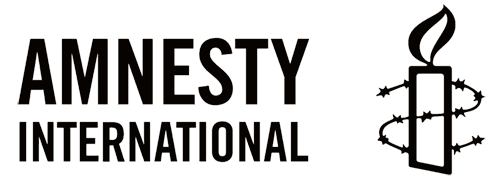Ethiopia is one of our planet’s oldest nation in East Africa. It is a home for 102 million people and the African Union headquarter office is in Addis Ababa, the capital. The last Emperor His Imperial Majesty Hailesellassie I was overthrown by the military group in 1974. After a prolonged 17 years of civil war, a resistance group from Tigrain minorities called the Tigrai People’s Liberation Front -TPLF (Ethiopian Peoples’ Revolutionary Democratic Front- EPRDF formed by TPLF lately) took power from the military group, Dergue in 1991.
The TPLF dominated EPRDF is in power for the last three decades and the government is accused of human and democratic right violations. The well-known human right organization including the state department reports in the last 27 years systematically documented the arbitrary detentions, summary executions, ethnic cleansings, inter-ethnic conflicts, inhuman inflicting and tortures perpetrated and instigated by the TPLF led government.
The government has well known notorious torture centres and prison houses. Prominent human right activists and politicians like Professor Asrat Woldeyes (the leader of All Amhara people’s Organisation) had lost their lives locked under the bars of these notorious centres.
The Central investigation centre known as Maekelawi which is in the hearts of Addis Ababa was reported to have been closed in April 2018 officially. The closure of the Maekelawi glimpses hope as a good beginning for improving the human right situations on the ground and we have also learnt that the government is gaining appreciations because of that.
Is this beginning for a change?
When I heard it for the first time I started to wonder if the closing of Maekelawi is a beginning for change. Does it show the readiness of the government to make changes and advance the freedom of speech and opinion? I doubt. Let me provide my arguments.
This April I have had a chance to talk to people who have been released from prison after the Maekelawi has been closed. One of them is Seyoum Teshome, an Ethiopian blogger and university professor. Seyoum was first imprisoned in the Maekelawi . But when the government closed it, he was moved to Sostegna (Third Station) or usually known as the Kazan chis with other inmates. I asked Seyoum about the closing of Maekelawi and the treatments at Kazan Chis. He answered,
As you know I was imprisoned for 39 days since March 8, 2018 of which at Maekelawi 30 days and the remaining 9 days in Kazan chis. We, the inmates, were moved to Kazan Chis in the morning and heard the closing of Maekelawi in the afternoon. I have been detained in both investigation centres. First, I would like to tell you that Maekelawi is not closed. The government has closed only the quarantine part of the Maekelawi . The rest of the Maekelawi is still functional.
The Kazan Chis Centre is replica of the Maekelawi . It also has very cold and dark rooms. These dark rooms are reserved for solitary confinements. Suspected inmates are kept in these dark and cold confinement rooms up until they confess guilt. They are not allowed to talk to their relatives and religious fathers. There were four people in these solitary confinement rooms in our first day. In my last day at Kazan Chis, I have seen that there were 8 individuals in these rooms.
The investigations technique at Kazan Chis are same kind of that of Maekelawi . Both mental and physical torture are commonly wide spread – beating with stick, removing nails, tying water filled bottle on testicles with rope and other kinds of tortures are also common in the Kazan Chis /Third. I have seen inmates who has been subject to these kinds of tortures.
Seyoum said that the Kazan chis ‘investigation centre’ is well designed for the common tortures and inflictions. In explaining the differences between the Maekelawi and the Kazan chis investigation centres Seyoum said that most of the Maekelawi investigations were done in the underground while in Kazan Chis it is on the third floors of the building and the buildings are soundproofed.
Network of detention centres covers all of Ethiopia
On the other hand, we can see from the following perspective. There are nine regional states and two city councils under the Federal State. Each state is divided in several Zones and Woredas. Woredas are composed of kebles (usually from 3 to 40 kebles in a woreda), the lowest governmental administrative units.
As of 2008 world bank report, there are about 769 Woredas in Ethiopia. In the entire country, there are more than 11,000 kebles. In each Keble there is at least one jailing centre. In every Woreda, there are police stations which are typical torture centres. At Zonal levels, there are one to four formal prison houses depending on the size of the zone. All of the detention centres, police stations and prison houses from the local government to the federal levels are usually full of inmates.
During national electoral periods and public uprisings, even collages, health centres and military training centres have served for jailing and torturing of innocent people. This was common in 2016 and 2017 in Amhara populated areas.
So, it is the light of this, I say that closing one (a portion of it) torture centre while so many of them are open and still using the same modus operandi, in my opinion, does not constitute a change or improvement.
Author Muluken Tesfaw. The author is an Ethiopian journalist and human rights activist who has lived in Finland since 2016.
The views expressed in the blog are the author’s personal views. They are based on the author’s own research, and do not necessarily represent the organization’s official views.

